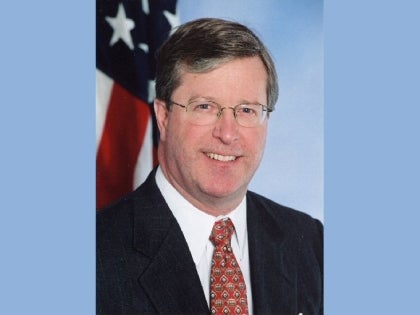
Moving Toward Alternative Energy

The world of alternative energy is stirring like never before, and it’s very good news for our state, our nation, and for the Southern Tier-Finger Lakes region specifically. It becomes clearer every day that the future well-being of our nation (and what we’re talking about, ultimately, are the lives of our children and grandchildren) is inextricably bound to how America addresses the issues of energy consumption and foreign oil dependency.
It’s been just over three decades since the 1973 oil crisis gave rise to, arguably, America’s energy consciousness. Thedeath earlier this yearof former President Gerald Ford evoked memories of those days and reminded us of how America’s energy consciousness has occasionally flared through the ensuring years, but has never truly burned brightly for very long. But now I believe the overriding importance of energy conservation is here to stay. The critical issues linked to energy -- national security, global warming, the economy -- mean that we must reexamine and restructure our energy policies and lifestyles like never before.
Energy conservation is going to demand all of the creativity and perseverance that the nation can muster. It’s going to demand the creativity of government at all levels, and it’s going to demand the perseverance of every American citizen.
It’s been noted that our nation must devote the same type of national commitment to energy as we devoted to reaching the moon throughout the decade of the 1960s. I think securing a sane and stable energy future for America calls for exactly that kind of commitment, nothing less. The leadership must come from the federal government, but it will only be carried forth through the cooperation of every state and county, town and village, and citizen in America.
One strategy that’s garnered a lot of recent attention focuses on the development of alternative and renewable energy sources. Consider that:
> inhis State of the Union address, President George Bush called for a dramatic increase in the nation’s supply and use of renewable and alternative fuels, such as ethanol, hydrogen, methanol and butanol;
> in his State of the State message, New York Governor Eliot Spitzer pledged to continue working "to increase renewable energy production so the state can meet its goal of obtaining 25 percent of its energy needs from renewable sources"; and
> even closer to home,Cornell Universityhas been awarded a $10 million state grant to assist in the development of technology for industrial-scale production of ethanol.
New York is making significant inroads into the emerging biofuels industry. New ethanol production plants will soon dot the state landscape: in the Rochester area, on the western edge of the Adirondacks, and in Orleans and Seneca counties.
New York’s agencies and public authorities have sought to increase their purchase and use of biofuels for heating and transportation throughout the past year. That has no small impact on developing a homegrown biofuels industry. State agencies and public authorities annually consume more than 48 million gallons of diesel fuel and 55 million gallons of heating oil. The new markets created by these agencies will encourage investments in biofuel production and potentially make New York an industry pioneer. The possibilities are limitless.
Take agriculture, for example. There are nearly two million acres of underutilized farmland in New York State. It’s land on which our farmers could become competitive producers of so-called energy crops -- soybeans, switch grass, willow -- that will ultimately feed an expanding biofuels market, including ethanol and butanol.
New York government should keep working to identify locations to grow the necessary energy crops. I remain hopeful that we can identify opportunities in the Southern Tier-Finger Lakes region. Farmers and legislators in Steuben County have already shown interest. We’re fortunate to have Cornell University as a leading research institution into new technologies and feedstocks to make biofuel production more efficient and economical.
The production of energy crops can create new markets for farmers, support jobs and rural economic development, and replace imported energy with homegrown fuels and products. We need to start moving full speed ahead into this new and exciting energy future.



